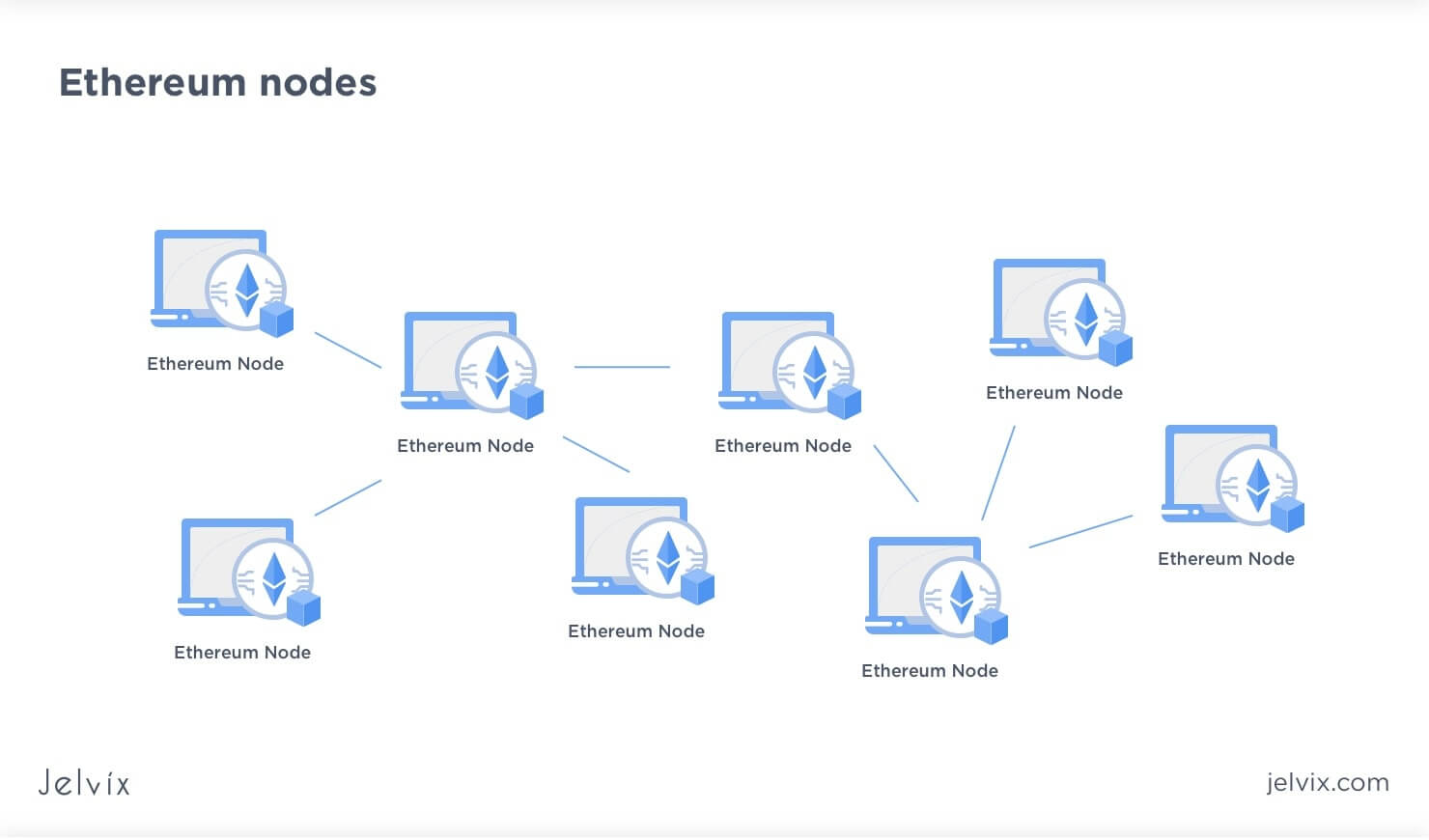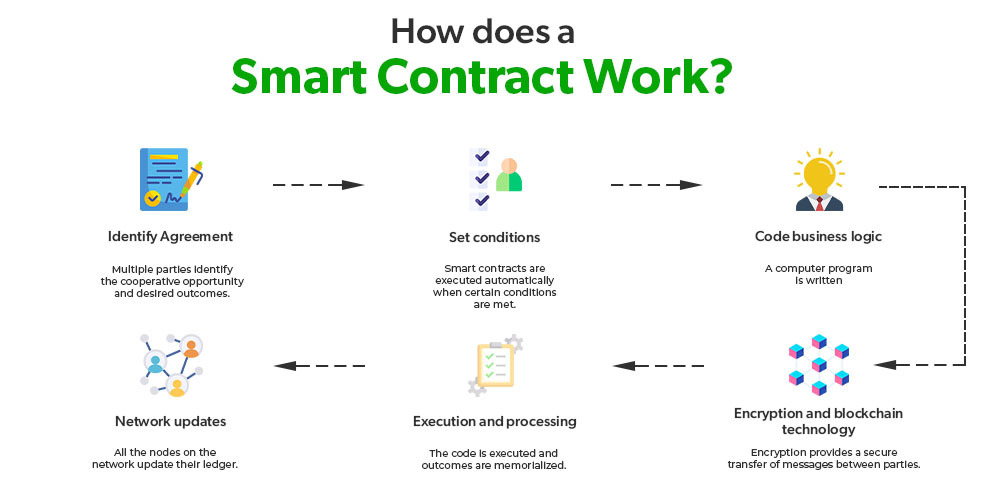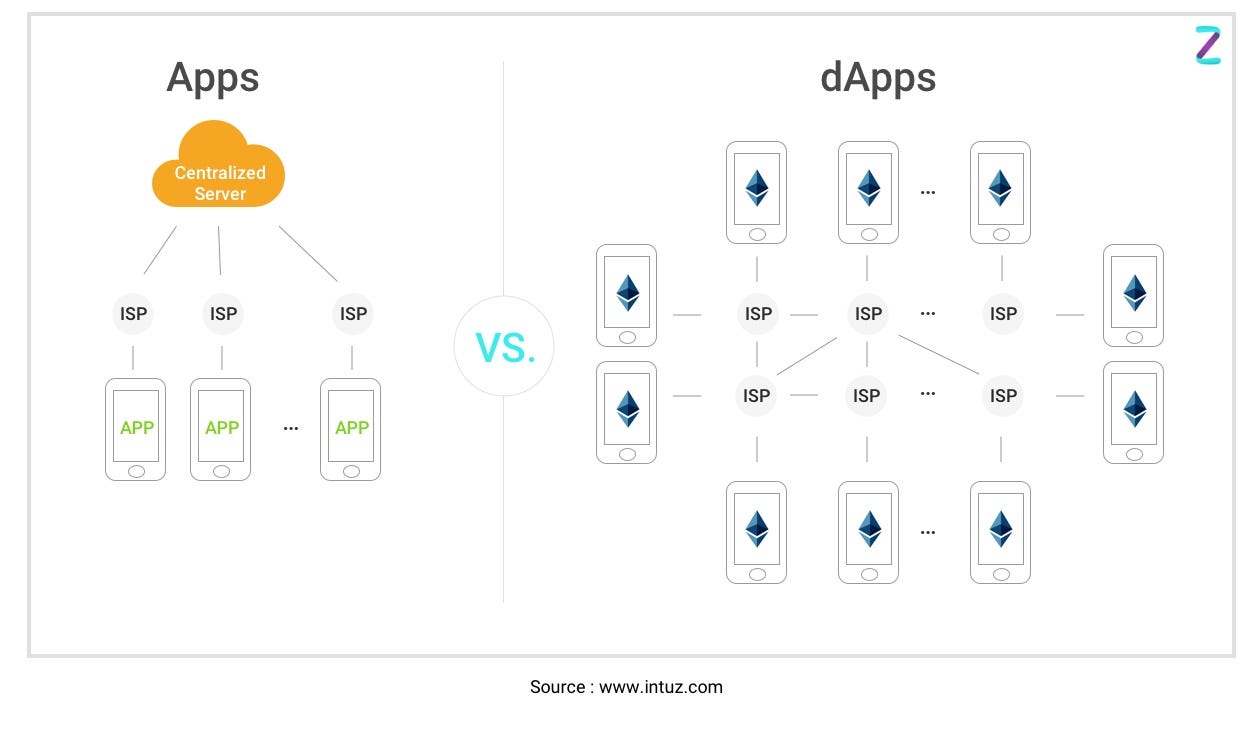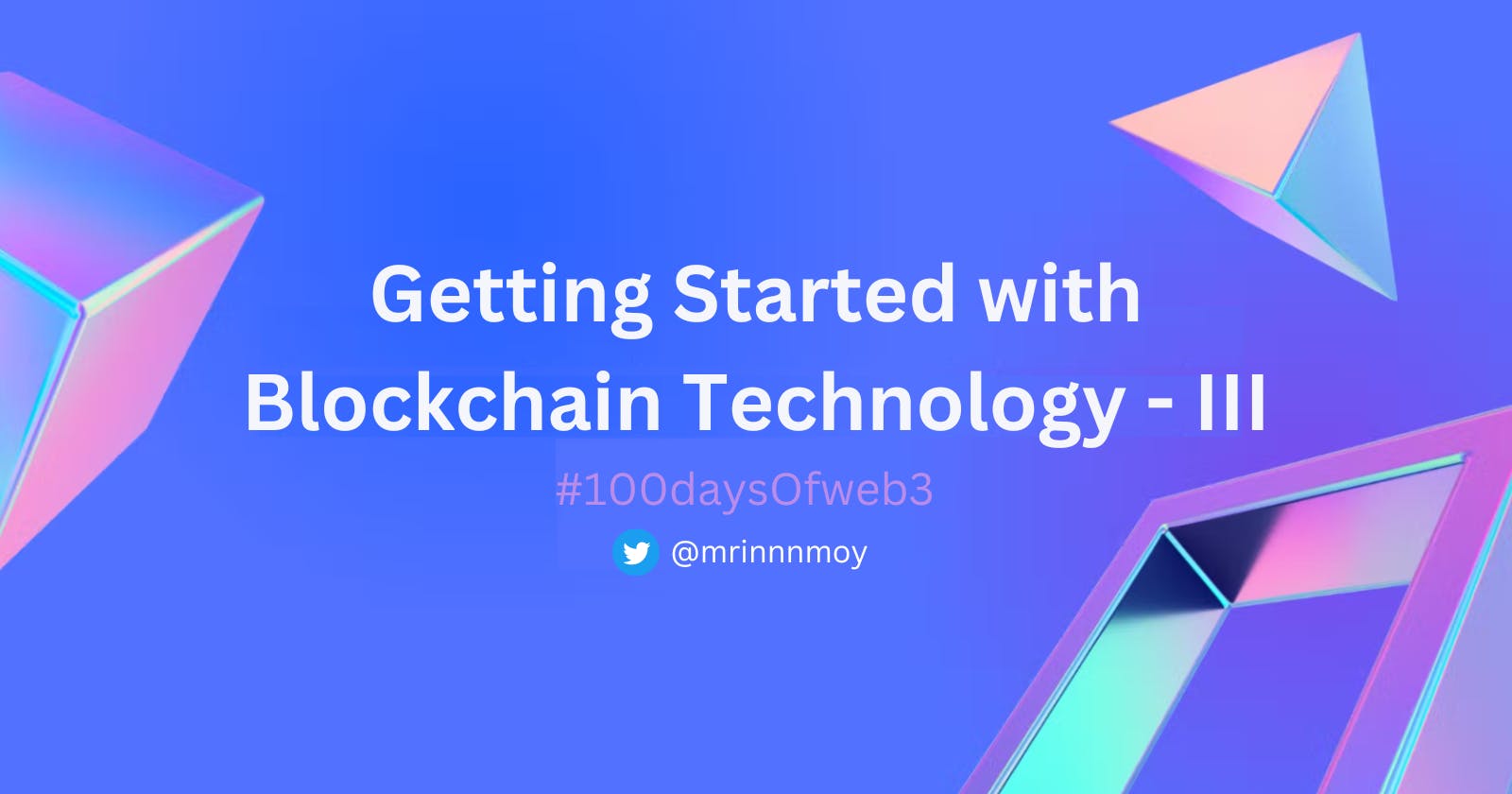It's been 9 days since I started learning Blockchain Development with the initiative of #100daysOfweb3 and this article depicts all the learnings that I have acquired about Blockchain in the following week.
So starting with, a few days back I published my first and second articles on Blockchain development where I talked about blockchain and cryptocurrency and this article it's going to be about Smart Contracts.
Ethereum
Ethereum is a decentralized, open-source blockchain with smart contract functionality. Ether is the native cryptocurrency of the platform. Among cryptocurrencies, ether is second only to bitcoin in market capitalization. Ethereum was conceived in 2013 by programmer Vitalik Buterin.

Ethereum Nodes
An Ethereum node is simply any computer running the software needed to connect with the Ethereum network. Nodes connect to send information back and forth to validate transactions and store data about the state of the blockchain.

Ethereum Accounts
There are two types of accounts in Ethereum: Externally Owned Accounts (EOA) and Contract Accounts. An EOA is controlled by a private key, has no associated code, and can send transactions. A contract account has an associated code that executes when it receives a transaction from an EOA.

Smart Contracts
Smart contracts are code written into a blockchain that executes the terms of an agreement or contract from outside the chain. It automates the actions that would otherwise be completed by the parties in the agreement, which removes the need for both parties to trust each other.

Decentralized Apps (D-apps)
Decentralized applications (dApps) are digital applications or programs that exist and run on a blockchain or peer-to-peer (P2P) network of computers instead of a single computer. DApps (also called "dapps") are thus outside the purview and control of a single authority.

Ethereum Virtual Machine (EVM)
The Ethereum Virtual Machine or EVM is a piece of software that executes smart contracts and computes the state of the Ethereum network after each new block is added to the chain. The EVM sits on top of Ethereum's hardware and node network layer.

Ethereum Gas
On the Ethereum platform, “gas” is a unit describing the amount of computational power needed to execute specific operations on the network.
Because every Ethereum transaction consumes computational resources, transactions come with a cost.
Decentralized Autonomous Organization (DAO)
A DAO is a decentralized autonomous organization, a type of bottom-up entity structure with no central authority. Members of a DAO own tokens of the DAO, and members can vote on initiatives for the entity.
Smart contracts are implemented for the DAO, and the code governing the DAO's operations is publicly disclosed.

The DAO attack
The DAO was a decentralized autonomous organization (DAO) that was launched in 2016 on the Ethereum blockchain. After raising USD 150 million worth of ether (ETH) through a token sale, The DAO was hacked due to vulnerabilities in its code base. The Ethereum blockchain was eventually hard forked to restore the stolen funds, but not all parties agreed with this decision, which resulted in the network splitting into two distinct blockchains: Ethereum and Ethereum Classic.
Fork
A fork in a blockchain can occur in any crypto-technology platform—not only Bitcoin. That is because blockchains and cryptocurrency work in basically the same way no matter which crypto platform they're on. You may think of the blocks in blockchains as cryptographic keys that move memory. Because the miners in a blockchain set the rules that move the memory in the network, these miners understand the new rules.
Hard Fork
A hard fork is when nodes of the newest version of a blockchain no longer accept the older version(s) of the blockchain; which creates a permanent divergence from the previous version of the blockchain.

Soft Fork
A soft fork can also occur at times due to a temporary divergence in the blockchain when miners using non-upgraded nodes violate a new consensus rule their nodes don’t know about.

Initial Coin Offerings (ICO)
An initial coin offering (ICO) or initial currency offering is a type of funding using cryptocurrencies. It is often a form of crowdfunding, although a private ICO that does not seek public investment is also possible. In an ICO, a quantity of cryptocurrency is sold in the form of "tokens" ("coins") to speculators or investors, in exchange for legal tender or other (generally established and more stable) cryptocurrencies such as Bitcoin or Ether. The tokens are promoted as future functional units of currency if or when the ICO's funding goal is met and the project successfully launches.
ETH Major Updates (ETH 2.0)
Ethereum 2.0 marks a significant shift in the network’s consensus algorithm. Instead of Ethereum running an energy-intensive proof-of-work algorithm, the Eth2 upgrade (now referred to as consensus layer upgrade) means switching to a proof-of-stake algorithm.
A PoS algorithm brings many benefits over a PoW one, adjusting various aspects of a network like a scalability, security and accessibility.
Altcoins
Coins/ cryptocurrencies other than BTC, that are available in the market are known as Altcoins.
Conclusion
That's all I managed to learn in just 9 days, but I'll attempt to write articles to record what I learn in the future.
Below are the links to resources that I am following for learning Blockchain Development.
If you liked this article do share it with your friends and follow me on my socials.
